The Making of When Trees Turn to Ice: Part 1
Intro
When Trees Turn to Ice is the project that helped me dodge seasonal depression in 2022.
After the release of Invisible Seams, one of my biggest projects yet, I felt a little lost on what to do next – I am happiest when I am busy, but I was still too creatively exhausted to tackle something huge right away. The solution was a small, but very carefully crafted VN, keeping the scope manageable, but polishing the individual parts as much as I could.
In this retrospective, I will give an overview over my different steps as a solo dev and why I'm tackling them in this specific order! In Part 1, we will explore the Planning, Writing and Background drawing stages.
Keep in mind that the optimal process is going to look different for every developer or team, but this is a pipeline that works well for me. The goals for any creative process should be to reduce unneccessary work (not having to do things twice) so that more energy can go into making the result as high-quality as possible!
Outline and Planning
When I have an idea for a game and want to test the waters, I usually start with an outline. No concept art yet, no dialogue, only a very compact summary of the events of the story that shows how they're connected by cause and effect. The fundamental story beats, if you will! At this stage, weaknesses in the story will be most clearly visible and easiest to catch. I usually edit parts to amp up the emotional impact and look out for sequences that might be difficult for a player to follow and need clarification.
Connected to this is the planning stage, in which I jot down roughly which assets I need and how much time I estimate they'll take up. I simply go by days. That list may look something like this:
Backgrounds – 5 days
Nord Sprite – 7
Atlas Sprite – 7
Old Lady Sprite – 4
GUI – 3
CGs – 20?
Directing – 5
Audio – 4
Accessibility – 3
Total: ~58 days
All of these estimates are based on my previous experiences with making VNs. They don't have to be perfect – They never will be! - but what matters is that they give me a rough idea of how long the project will take. In this case, I could be pretty sure that I could finish the game in 2 months and have it ready in time for the Winter Jam, but I wasn't going to cut corners if that ended up being too tight.
When I'm not sure how long certain assets will take (like in the case of CGs), I'll try to make a generous estimate. Better expect that it'll take longer, then you'll have some buffer time.
There were some past project ideas for which I went through this planning stage and decided that “Hey, that's much more than I initially thought, I'd rather do something else instead”. And then I dropped it! There's no shame in choosing that, or in reducing the scope of a game to make it more manageable.
Writing
I've committed to the project, I got my rough plan at the ready – Time to get writing! For a relatively short story like this one (around 10 k words), I like to write just a bit of a Treatment before I go into dialogue.
While the Outline told me what story beats happen in what order, the Treatment goes into a bit more detail as to how they happen. Tackling it scene by scene: What's the overall mood and how does it shift? What emotional values get twisted? What do the main characters want, and what conflicts arise? What information do I need to establish when in order for it to pay off later?
I knew that I wanted When Trees Turn to Ice to have a sort of archetypal appeal, a story about two people having to survive a rough and dangerous winter. But it had to be more than this too. What would make the story truly evocative would be the specific struggles that both characters face, things that are important exclusively to them. Nord and Atlas are both pushed to their limits in very different ways, and the way they communicate over this ends up strengthening their relationship. Their specific quirks, flaws and experiences are the heart that keeps the story beating.
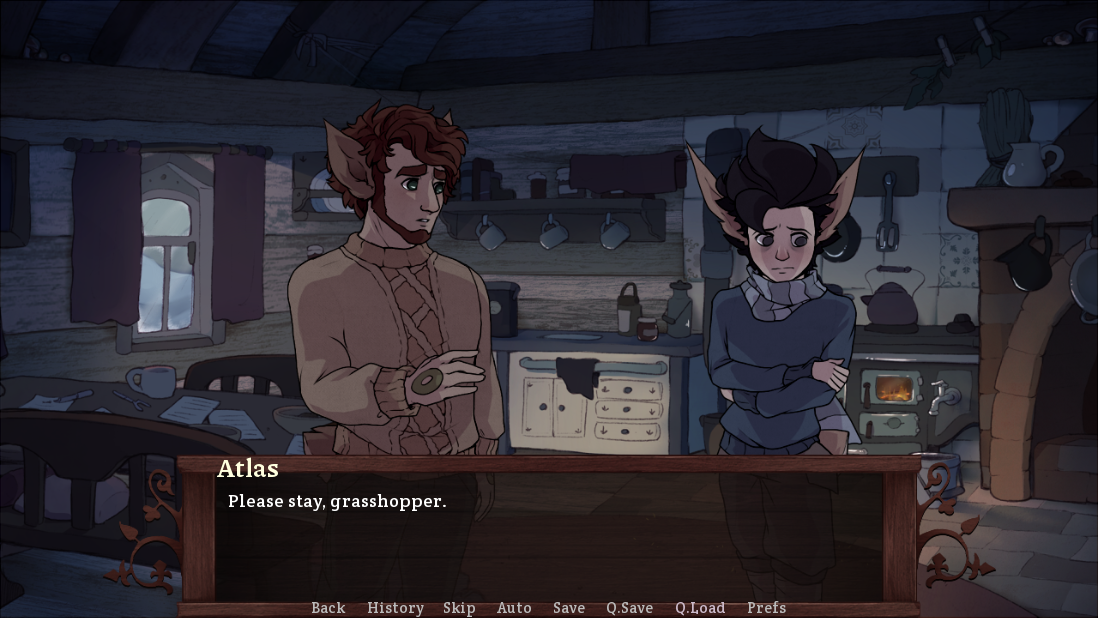
With this in mind, I approached the first draft, I. e. the script that the player will actually get to read. I'm not much of a writer, but one useful tip I can give is that you don't have to write a story in perfect chronological order. If you're itching to tackle some emotional scene that's gonna go to the halfway point or near the end, nothing's stopping you from getting those thoughts out now and filling in the gaps later! Once the first draft is finished, I like to take a break and then go back to editing the text with fresh eyes.
Why finish the script before anything else? I like having a solid script done early because it informs all of the visual assets that I'm going to need. With that said, I will always edit and tweak the script in small ways later on.
Backgrounds
When Trees Turn to Ice conveniently takes place in the same location pretty much all the way, so I could get by with a single background and show all the exterior scenes through CGs. However, I knew that staring at the same kitchen background for 10 scenes could get daunting for players, and I wanted to portray very different moods for each day. The solution: Create different lighting and colour scenarios for the same background!
Below are a couple examples of different versions of the same scenery. Never underestimate the effects of psychological lighting! Also take note how the view from the window and the fire in the stove change for each scene, as a way to visually give the viewer more information about the current status.
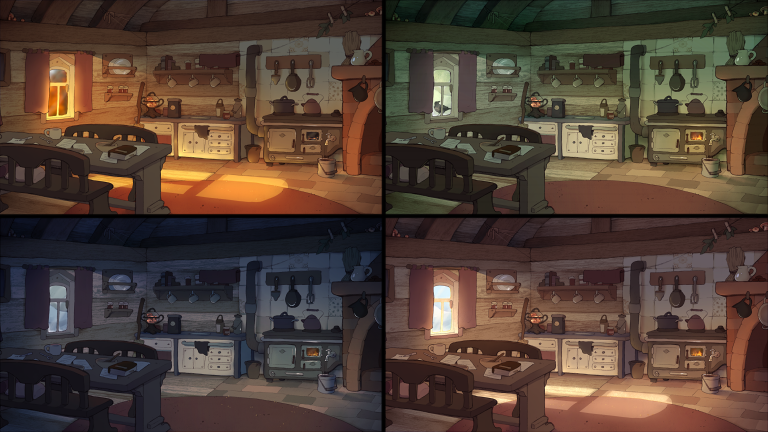
As for my drawing process for this background, have some WIP shots. I start out with a rough digital sketch and then do a couple of cleaner passes on top, working out the details one by one. Keep the horizon line in mind! It will most likely be the eye-line of your character sprites, so you don't want it to sit too high or too low, otherwise the perspective will look wonky.
I even redlined myself a couple times before doing the final pass. The results can look pretty funny in retrospect, just to give an impression of how chaotic this creative process can be.
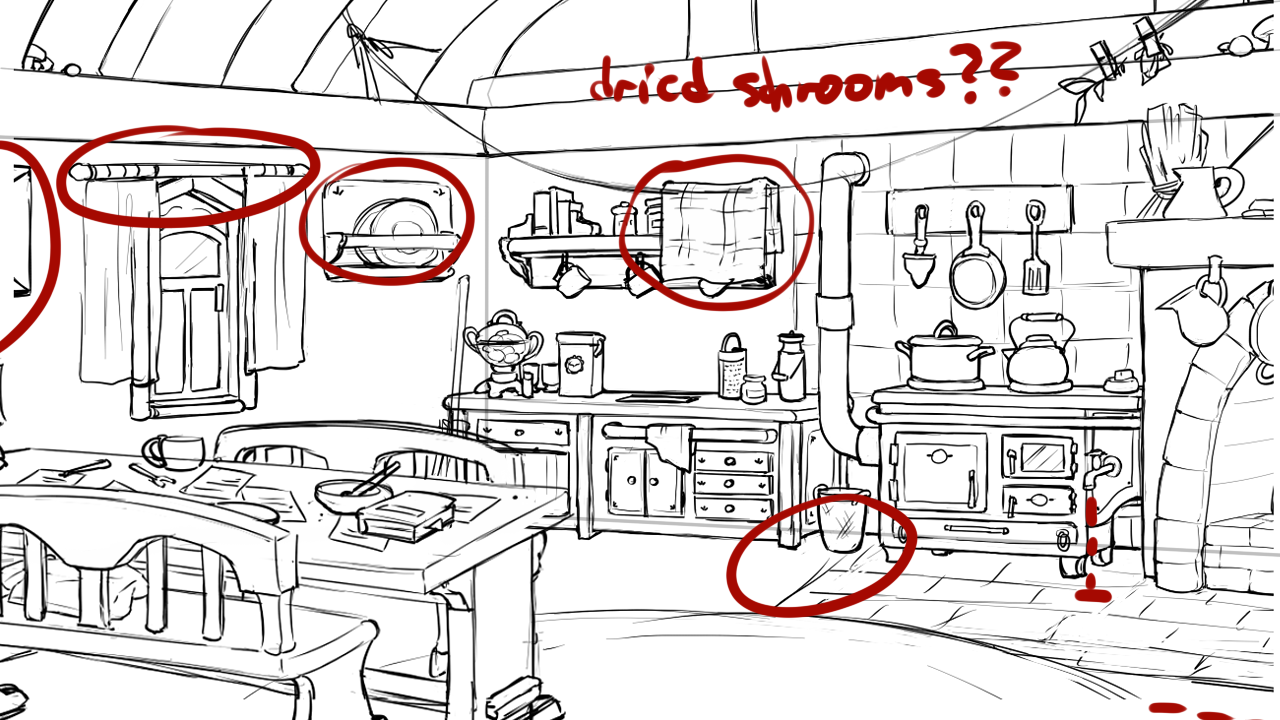
Since I like having really crunchy traditional pencil lines in my backgrounds, I printed the digital sketch and essentially traced it in pencil, then scanned that pass. Nice texture, isn't it?
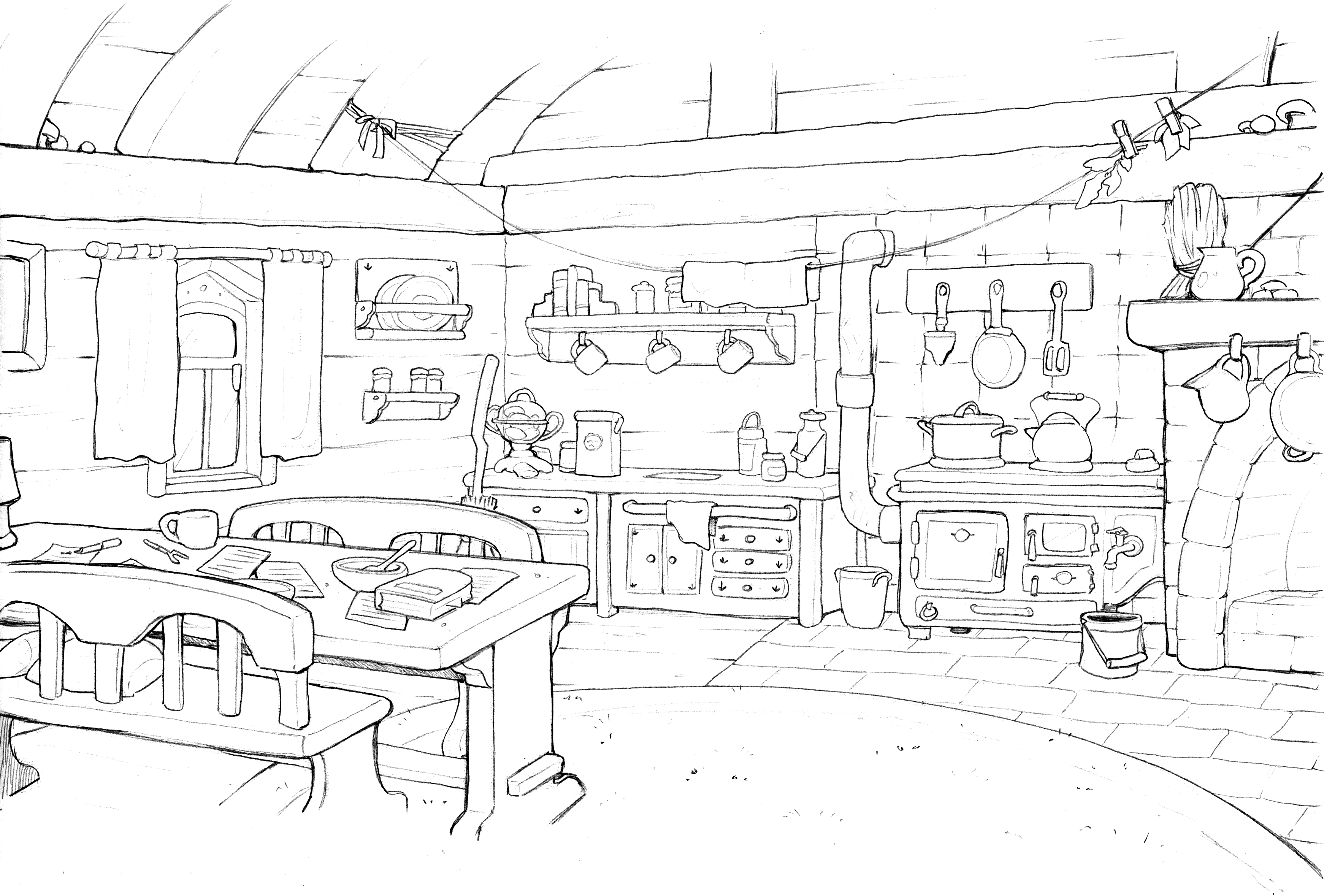
Next up, flat colours! The cottage is pretty strong on browns and soft reds, so I tried keeping everything in this relatively warm and cozy colour family, but having enough variation to keep things interesting.
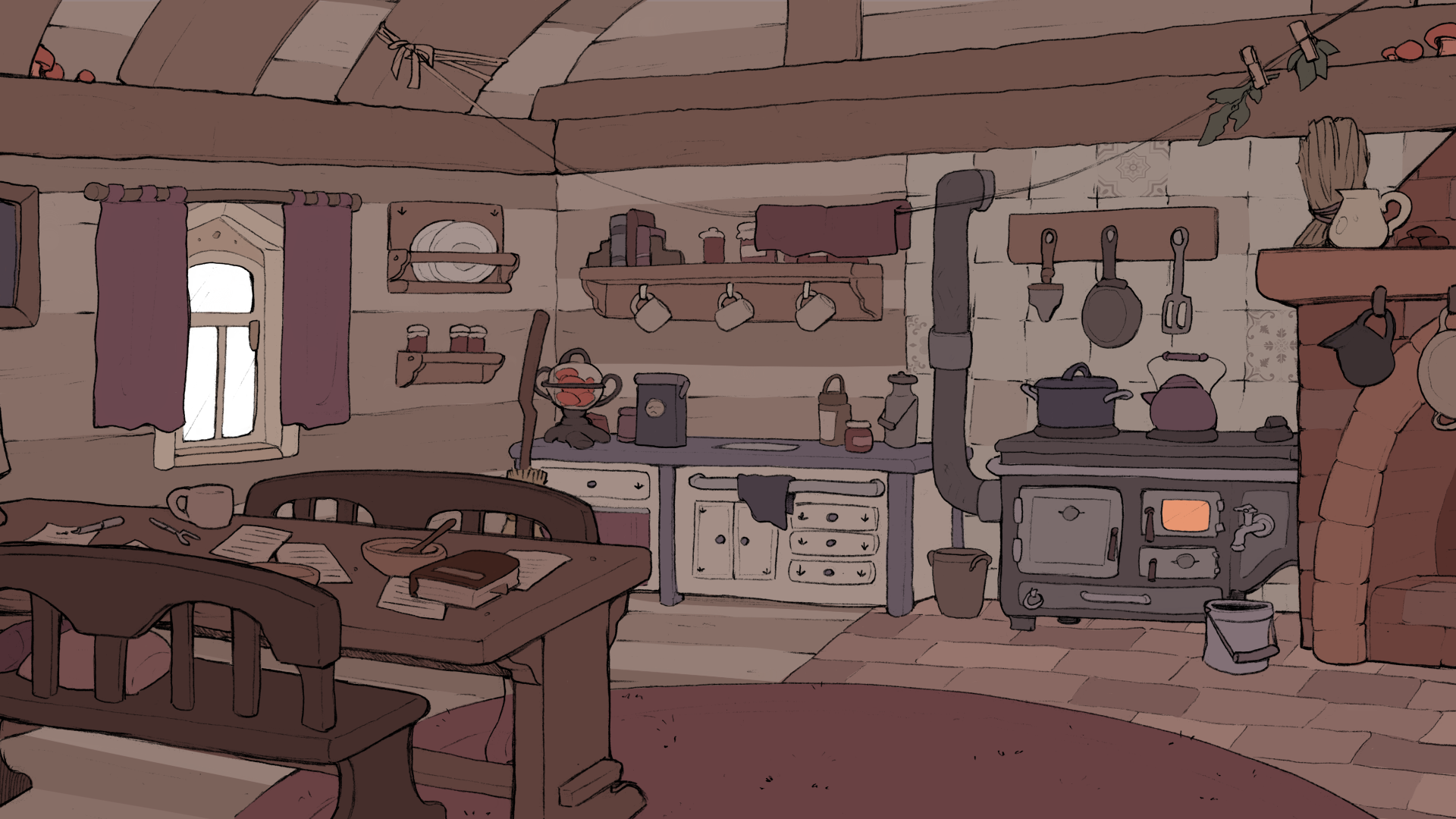
Then I added some textures, especially for that chunky wooden look, and then, Ambient Occlusion! The idea was that I could identify some soft shadow areas that would show up regardless of lighting scenario. That way I didn't have to draw completely new shadows in each background variant.

And finally, finished shading and colour adjustments! There isn't a huge secret to the different colour keys, it mostly comes down to Overlay layers and differently coloured shadows.

Since this dev log is getting lengthy, I will put a cut right here.
Check Part 2 for Sprites, Coding, CG illustrations and more!
(ノ´▽`)ノ♪
- Dev
Get When Trees Turn to Ice
When Trees Turn to Ice
Keeping two hearts warm throughout a harsh winter.
| Status | Released |
| Author | LadyIcepaw |
| Genre | Visual Novel |
| Tags | Amare, Boys' Love, drama, Fantasy, Furry, Gay, Kinetic Novel, LGBT, Romance, Story Rich |
| Languages | English |
| Accessibility | Color-blind friendly, Blind friendly |
More posts
- The Making of When Trees Turn to Ice: Part 2Jan 12, 2023
- Update 1.0 changelogJan 02, 2023
- Release!Dec 27, 2022

Leave a comment
Log in with itch.io to leave a comment.